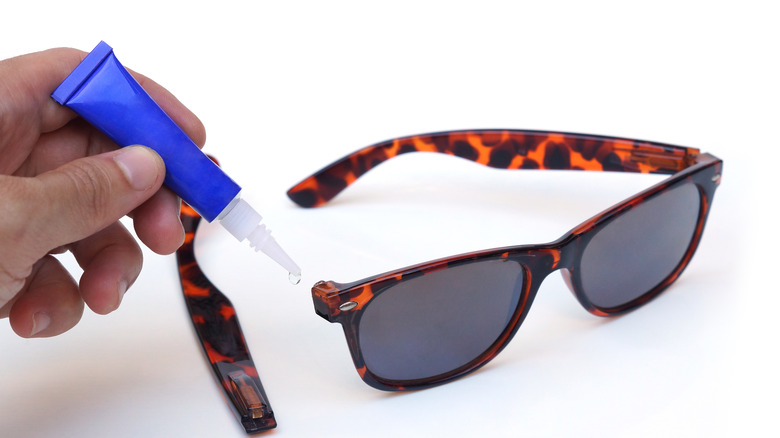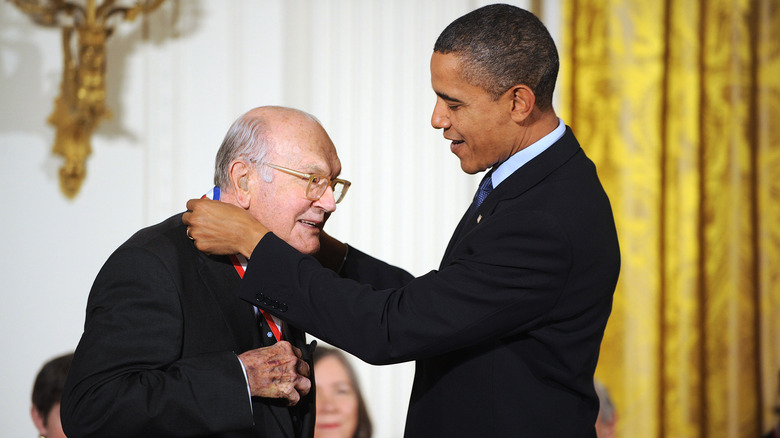Here's Why Super Glue Was Invented
The year was 1944, and the scientists at Eastman-Kodak were tasked with an important project (per the Michigan Institute of Technology). Their goal was to create a clear plastic that was sturdy enough to be used in a military weapon's gunsights. But like many scientific creations, their invention didn't have quite the usage they were (literally) aiming for.
A scientist named Dr. Harry Coover joined Eastman Kodak, located in New York, where he joined their chemical research team in 1944. Instead of making a gunsight plastic, Coover created a see-through liquid that had a powerful reaction with any amount of moisture. The liquid would react on almost any surface. It was outrageously sticky — Coover was unsure what to do with it. It wouldn't be suitable for a gunsight, so he put it aside and began experimenting with other options for the time being, per The New York Times.
But Coover didn't forget about the invention, and he got another chance to experiment with the liquid, called cyanoacrylate, later in his career. In 1951, Coover began a new position at a different Eastman Kodak branch, which allowed him to keep experimenting with cyanoacrylate.
Testing the power of super glue
Coover and the research team basically spent a lot of time gluing things together with the super glue to test its properties (via the Michigan Institute of Technology). According to The New York Times, as Coover was testing the substance one day, he ruined a $3,000 machine in his science lab when he realized he couldn't get the super glue off a refractor.
Aside from being super sticky, the glue also didn't need to be heated up or pressed on in order to work (via the Michigan Institute of Technology). This was a positive for Coover, who began researching a heat-resistant substance to hold the canopies onto jet planes in extreme flying conditions.
According to Military Times, doctors later figured out other uses for the glue: It could hold severe wounds closed so that soldiers wouldn't bleed out before they could receive medical treatment. The company named the substance "Eastman 910," but later changed it to the more catchy name, "Super Glue."
The many uses of super glue
Some of the first versions of the substance were too harsh on human skin, so later versions were tweaked for medical use (via Michigan Institute of Technology). Doctors were able to piece together arteries during surgery using the substance, and dental surgeons used its strength on human teeth. Military Times reports that you might know it by its other names, Traumaseal and Dermabond. These are safer versions of super glue for use by doctors, surgeons, and dentists. The inventor, Coover, said of the new achievement, "That's something I'm very proud of — the number of lives that were saved."
People continue to find inventive new uses for the substance, like morticians, who use it to glue shut the lips or eyes of the deceased (per Britannica).
The Kingsport Times-News reports that Coover even got to show off his invention to the world on the show "I've Got a Secret," when he and the host hung from metal bars after applying just one drop of super glue each. Coover would go on to hold more than 460 patents, and was inducted into the National Inventors Hall of Fame for his significant scientific breakthroughs.


